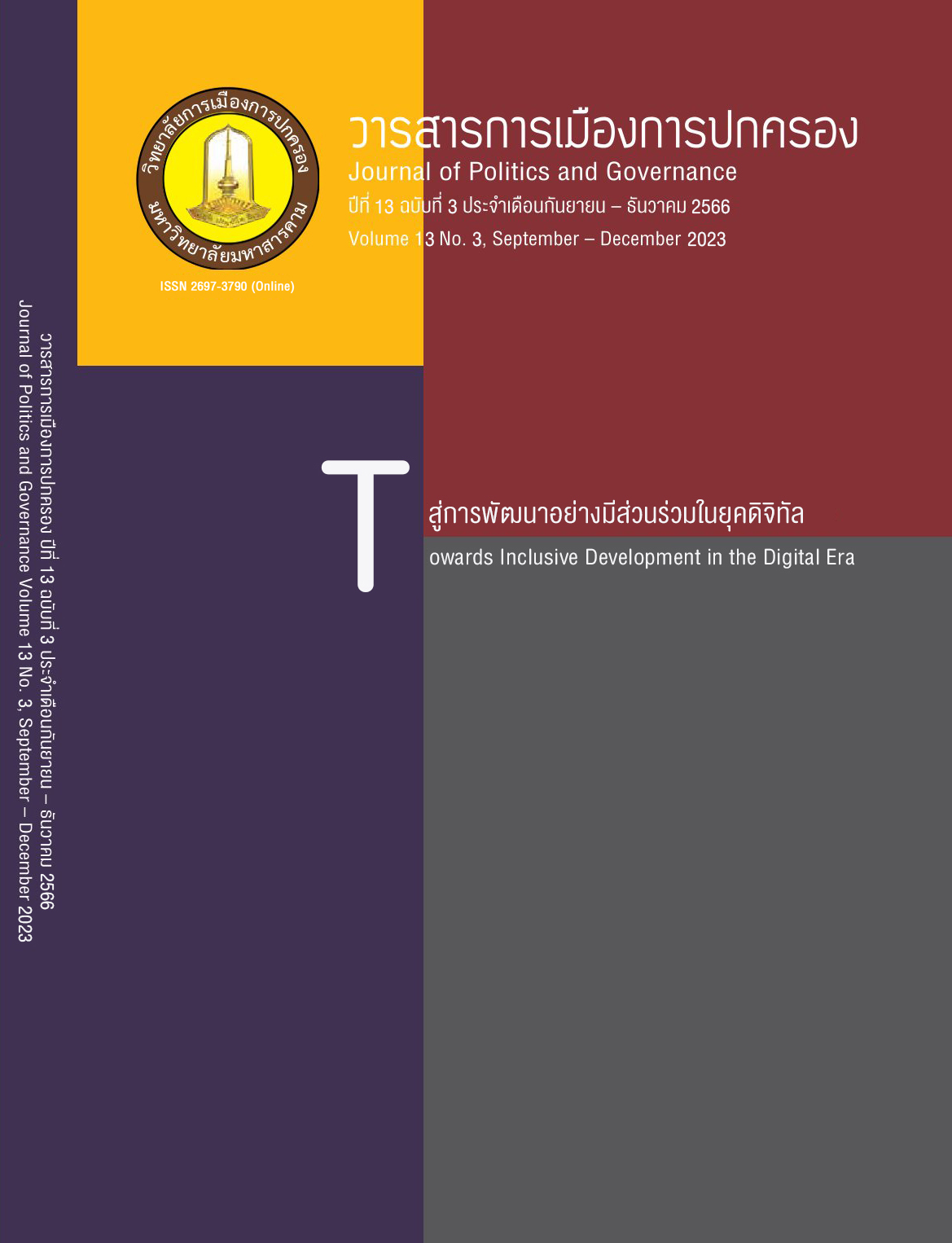A Study of Internal Communication Model Affecting the Staff’s Understanding Towards the Strategic Plan of the Faculty of Political Science and Public Administration, Chiang Mai University
Main Article Content
Abstract
This study aims to examine the model of internal communication affecting the staff’s understanding of the strategic plan and to explore the use of social media that relates to the staff’s understanding of the strategic plan of the Faculty of Political Science and Public Administration, Chiang Mai University. The difficulties and development guidelines for internal communication are also explored. The faculty members were divided into three (3) groups administrators, the academic staff, and the supporting staff, and interviewed. In this mixed method research, the quantitative methodology was used to collect and analyze data when the quantitative methodology was applied to deepen the outcome. The findings reveal that the internal communication model affects the staff’s understanding of the strategic plan the most is Top-down communication (the average level of 3.66). This model of communication was very important for the administration because the strategic plan was informed to the faculty members regarding goals, strategic plans, and action plans. Therefore, not only the staff could have a better understanding but the strategic plans could also be properly and more efficiently implemented. Moreover, this internal communication model could be more efficient and effective if it is used with other kinds of communication. Regular follow-ups are also needed. Next are cross-channel communication and horizontal communication, the average level is 3.31 and 3.10 respectively. The least internal communication model affecting the staff’s understanding of the strategic plan was Bottom-up (the average level of 2.92). Moreover, the faculty members from all three groups agreed that verbal communication was the best way to have face-to-face communication with other members. Using social media such as the Line application or Facebook was considered informal communication that was done for further cooperation after the textual command was approved. They could be used for general conversations among members. Besides, the difficulty of internal communication was the senders delivered unclear messages to the receivers. So, the message regarding the strategic plan failed for implementation. However, the receivers should have a positive mindset and be open-minded about the message. If they don’t receive a clear message, they might not be able to understand either the limitation or the situation of the faculty. So, they don’t have an awareness of the importance of the strategic plan’s implementation.
Article Details

This work is licensed under a Creative Commons Attribution-NonCommercial-NoDerivatives 4.0 International License.
References
พนิดา เกรียงทวีทรัพย์, เเละสุรมงคล นิ่มจิตต์. (2561). รูปแบบการสื่อสารที่มีความสัมพันธ์กับประสิทธิภาพการทำงานภายในองค์กร: กรณีศึกษา สำนักงานบริหารหนี้สาธารณะ, Veridian E-Journal, Silpakorn University (Humanities, Social Sciences and arts), 11(3).
พิริยา ศิริวรรณ. (2559). การสื่อสารภายในองค์กร (คณะแพทยศาสตร์ศิริราชพยาบาล) เรื่องที่ไม่อาจมองข้าม. เวชบันทึกศิริราช, 9(1).
ยุบล เบ็ญจรงค์กิจ. (2554). การวางแผนและการประเมินผลการสื่อสารเชิงกลยุทธ์. คณะนิเทศศาสตร์ จุฬาลงกรณ์มหาวิทยาลัย.
รัตนะ บัวสนธ์. (2555). วิธีการเชิงผสมผสานสำหรับการวิจัยเชิงปริมาณ (พิมพ์ครั้งที่ 1). สำนักพิมพ์แห่งจุฬาลงกรณ์มหาวิทยาลัย.
สมยศ นาวีการ. (2527). การติดต่อสื่อสารขององค์การ. บรรณกิจ.
สิทธิ์ ธีรสรณ์. (2550). แนวคิดพื้นฐานทางการวิจัย (พิมพ์ครั้งที่ 1). สำนักพิมพ์แห่งจุฬาลงกรณ์มหาวิทยาลัย.
สัญชาติ พรมดง, เเละคณะ. (2561). การสร้างประสิทธิภาพของการสื่อสารภายในองค์กรเพื่อเพิ่มความสามารถในการแข่งขันทางธุรกิจ. วารสารเครือข่ายส่งเสริมการวิจัยทางมนุษยศาสตร์และสังคมศาสตร์, 1(1).


